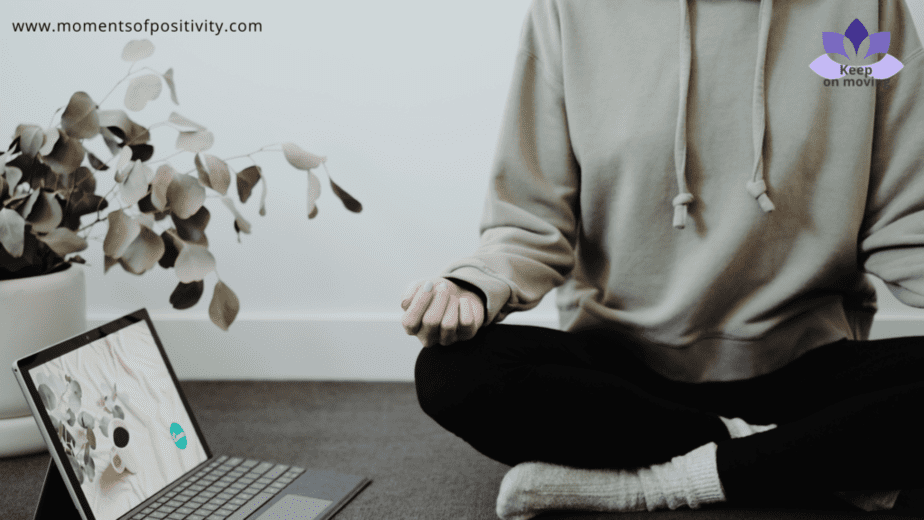Share this
Mindfulness is a practice that has been shown to improve many aspects of mental health. One way it does this is by helping you regulate your emotions. When we’re not in control of our emotions, they can lead to problems such as anxiety or depression. However, mindfulness can help us learn how to take back control over our own minds and bodies—and using this skill will help you feel less stressed out!
Mindfulness has been around for thousands of years, but you probably know it better as meditation. This guide will explore what mindfulness is, different types of mindfulness practices, common misconceptions about it, how you can incorporate mindfulness into your life, and more. Let’s get started…
What does it mean to regulate your emotions?
Regulating your emotions is a way to help you stay in control of your emotions. When you can regulate your emotions, it means that they are being managed rather than controlled by outside factors such as stress or anxiety.
Regulating means being able to understand when an emotion comes up and then respond with the right actions that will help reduce that emotion’s intensity. It also means being able to recognize when an emotion is present—and then stop yourself from acting on it at all! This helps keep things calm and collected because there isn’t any unnecessary drama happening around us when we’re trying not to let ourselves get carried away by our feelings (which could lead us down dangerous paths).
What is Mindfulness?
Mindfulness, or being mindful, is a state of being where you are fully aware and engaged in the present moment. It sounds simple enough, but mindfulness is a skill that anyone can learn. It’s about being present with your feelings, thoughts, and surroundings, whether that’s at home, at work, or even when you’re out trying new activities. One of the most important things to remember is that mindfulness is a skill that can be developed over time.
It’s something that can be applied to any area of your life, from your career to your relationships, and even in the way you handle your finances. As you become more mindful, you will find yourself becoming more aware of your thoughts and feelings, which will allow you to make better decisions in life. Mindfulness is the opposite of living in a state of autopilot. Rather than letting your thoughts and emotions control you, mindfulness allows you to take a step back and observe how you feel without getting caught up in it.
Why Should You Be Mindful?
There are many benefits to being mindful, including lower levels of stress and anxiety, improved focus and productivity, and improved relationships with others. If you’re feeling overwhelmed by life, you may want to consider incorporating mindfulness into your daily routine. With consistent practice, you can learn to understand your emotions and put them into perspective in a healthy way. By being more mindful, you can reduce your stress levels and improve your mental health overall. Being mindful can also help you improve your quality of life. You will be able to truly engage with yourself and those around you. You’ll be more in tune with your emotions, so you can deal with them in a positive way. You’ll also be more present at the moment, which will help you make better decisions.
Different Types of Mindfulness Practices
There are many different ways to practice mindfulness, and you can even tailor different activities to meet your needs. Below are some of the most popular types of mindfulness practices: –
- Meditation – Meditation is one of the most common ways people practice mindfulness. It involves consciously focusing on your thoughts, feelings, and bodily sensations. There are many different types of meditation, but they all have the same goal: to be fully present and aware.
- Breathing exercises – Breathing exercises are another simple way to incorporate mindfulness into your daily life. Simply focusing on your breath for a few minutes a day can help you feel more calm, relaxed, and present.
- Self-reflection – Self-reflection is a great way to challenge your negative thoughts and learn more about yourself. It involves thinking deeply about life, your relationships, your career, and more.
- Journaling – Journaling is another form of self-reflection that can be extremely helpful. It’s a great way to express your thoughts and emotions without being worried about what other people might think of your writing.
- Connecting with nature – Spending time in nature can be extremely beneficial for your mental health. There are many ways to do this, including gardening, hiking, or going for a walk in a nearby park.
- Creating art – Art can be an extremely therapeutic way to express your feelings and connect with yourself. Whether you paint, write poetry, or do something else, it’s an excellent way to practice mindfulness.
- Eating mindfully – Eating mindfully is a great way to practice mindfulness. When you’re eating, focus on the taste and texture of your food. Try to be as present as possible.
- Positive self-talk – Positive self-talk is a great way to challenge your negative thoughts. When you find yourself thinking negatively, try to turn your thoughts around with positive self-talk.
- Daily routines – Routines like brushing your teeth or taking a shower can become an excellent way to practice mindfulness.

Mindfulness practice can help you regulate your emotions.
The more you practice mindfulness, the better you will get at regulating your emotions in a healthy way. Mindfulness is about being present in the moment and accepting what is happening around you. It means learning how to let go of thoughts and feelings that make us uncomfortable by not trying to avoid or suppress them, but instead by acknowledging them and letting them pass away naturally.
Mindfulness is a practice that can be done anywhere, at any time. It is not about clearing the mind or reaching a state of bliss; it’s about paying attention to what is happening in the present moment and allowing thoughts to come and go without judging them. You don’t need special equipment or materials for mindfulness; all you need is yourself.
3 Pro-tips for practicing mindfulness and cultivating emotional balance
- Make a daily schedule – If you make time for mindfulness like you would any other important activity in your life, it’ll be easier to stick to it.
- Take risks – Trying new experiences is an excellent way to become more mindful.
- Express yourself – Journaling, art, poetry, dancing, and other creative forms of expression are great ways to practice mindfulness.
These techniques can help you relax and focus on what’s happening in the present moment. They can also help you connect with your emotions and figure out how to move past them in a healthy way.
Conclusion
Overall, mindfulness is an important skill to develop. Mindfulness is a practice that allows you to learn how to regulate your emotions. It can help you feel more in control of your life and less like a victim of circumstance. You can start practicing mindfulness by taking 10 minutes out of every day for self-care and reflection. Once you are able to practice mindfulness, you will be able to understand yourself better and make better decisions as a result. I hope with this guide, you will be able to understand what mindfulness is, its benefits of it, and different ways to practice it.



